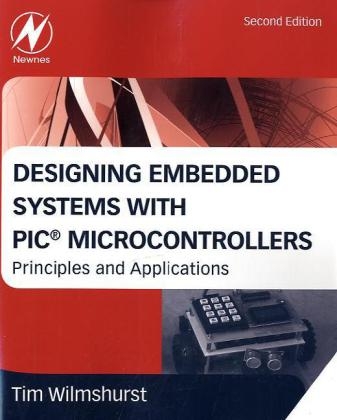Read more
PIC microcontrollers are used worldwide in commercial and industrial devices. This title focuses on the 8-bit PIC which is a versatile work horse that completes many designs. It takes you from introduction of embedded systems through to advanced development techniques for utilizing and optimizing the PIC family of microcontrollers in your device.
List of contents
SECTION I: GETTING STARTED WITH EMBEDDED SYSTEMSChapter 1: Tiny Computers, Hidden ControlSECTION II: MINIMUM SYSTEMS AND THE PIC16F84AChapter 2: Introducing the PIC 16 series, and the 16F84AChapter 3: Parallel Ports, Power Supply, and the Clock OscillatorChapter 4: Starting to Program - An Introduction to AssemblerChapter 5: Building Assembler ProgramsChapter 6: Working with Time: Interrupts, Counters, and Timers UnchangedSECTION III: LARGER SYSTEMS AND TEH PIC16F883AChapter 7: Larger Systems and the PIC 16883AChapter 8: The Human and Physical InterfaceChapter 9: Taking Timing FurtherChapter 10: Starting with SerialChapter 11: Data Acquisition and ManipulationSECTION IV: SMARTER SYSTEMS AND THE PIC18XX2Chapter 12: Smarter Systems and the PIC 18FXX2Chapter 13: The PIC 18FXX2 PeripheralsChapter 14: Introducing CChapter 15: C and the Embedded EnvironmentChapter 16: Acquiring and Using Data with CChapter 17: More C and the Wider C environmentChapter 18: Multi-tasking and the Real Time Operating SystemChapter 19: The Salvo Real Time Operating SystemSECTION V: TECHNIQUES OF CONNECTIVITY AND NETWORKINGChapter 20: Connectivity and NetworksChapter 21: A Zigbee projectChapter 22: A Survey of 16/32 bit PIC Microcontrollers, and DSPICAppendix 1: The PIC 16 Series Instruction SetAppendix 2: The Electronic Ping-PongAppendix 3: The Derbot AGV ? Hardware Design DetailsAppendix 4: Some Basics of Autonomous Guided VehiclesAppendix 5: PIC 18 Series Instruction Set (Non-Extended)Appendix 6: Essentials of C

